
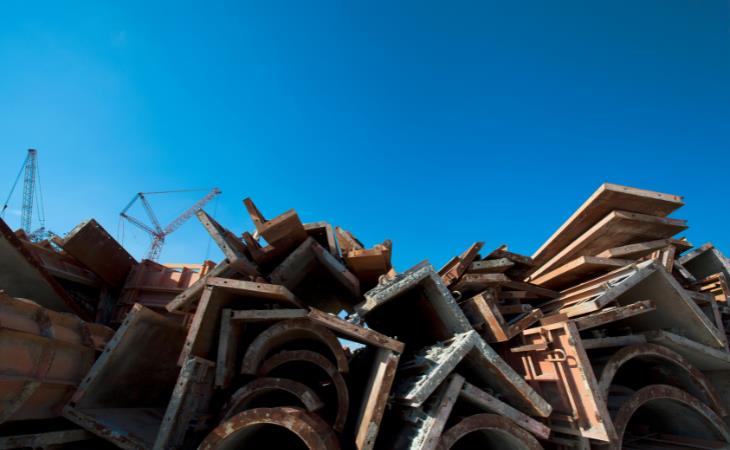

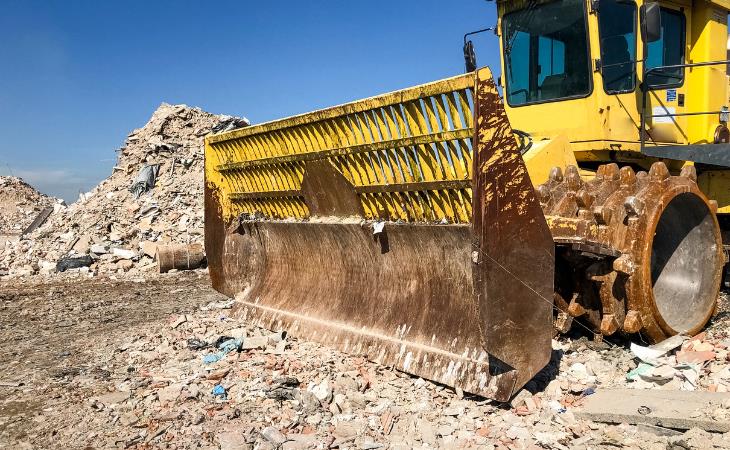

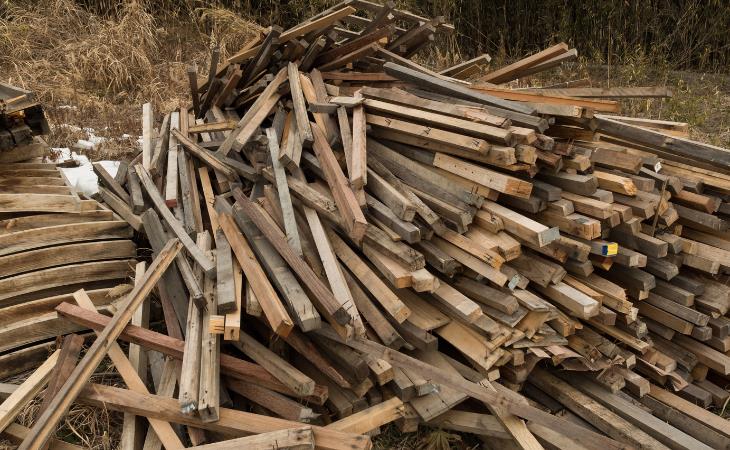
When salvaging doors, take with you all hinges, screws, knobs, latch plates, and related hardware too, as often matching items will not be easy to find once you leave the site.
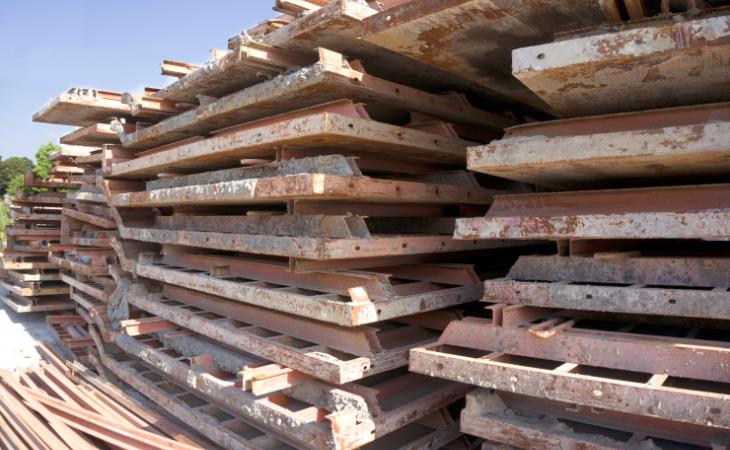

12 Easy Projects to Repurpose Old Clothes
From trash to treasure - repurposing old clothes is easier than you think.

Make Your Home Even Better With These Awesome Ideas
If you're looking to do a spot of home redecorating, these ideas will inspire you to greatness!

These People Completely Transformed Their Homes Themselves
DIY and budget home renovations may be all you need to transform and remodel your home into your ideal dream house

8 Best Construction Project Management Software
Discover the top 8 construction project management tools for efficient planning & execution. Streamline tasks & boost productivity in 2023.

Don't Throw Out Old Makeup! Here's What You Can Do...
12 helpful uses you can put your expired or unsuitable makeup items
 8:00
8:00
Loop, Knot, Drape: Fall Scarf Tying 101
This lovely woman demonstrates the better versions of how to wear a scarf, what not to do and how to easily make beautiful fashion choices.

I Can't Believe I Never Knew About these Food Hacks
Your cooking experience is about to become a breeze with these useful tricks!

These Winter Skincare Solutions Are Utterly Genius
The winter can take its toll on your skin, but that doesn't mean that you can't rectify problems quickly and easily. Find out about these 10 genius solutions.

This Guide Will Have You Doing Origami Within a Minute!
Always wanted to try folding paper sculptures? Well now with this easy guide you'll be folding them like a pro.

Kitchen Tips: How Long You Can Keep Leftovers?
It’s crucial to know how long different leftover foods can last in your fridge, and when it’s time to part ways with them for your own safety and health

How to Remove Chocolate Stains from Your Favorite Material
A chocolate stain can be one of the trickiest stains to remove as it’s known as a combination stain. Thankfully, these tips will help!

Easily Create These 8 Natural Sprays
Eight wonderful recipes to make eight natural sprays that can make your life easier and healthier.

The Devil Is in the Detail, Even When it Comes to Cleaning...
This guide shows you how to clean every room in your home, as well as specific parts of each one. You won't find a more detailed home cleaning guide than this.
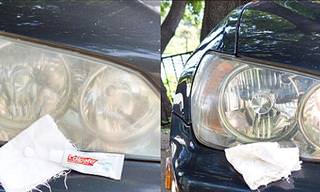
These Tips Will Help You Keep Your Car In Order
These hacks will help you get shinier headlights, organize your interior, and provide a nifty hack to help you remove a small car dent and lots more.

50 Ways to Unwind Without Spending a Cent
Here are 50 different ways to help you unwind which are totally free of charge.

How to Clean Your Jewels at Home for Free
Enjoying clean jewels used to be a tedious chore, or an expensive visit to the jeweler's, but this way you can do it at home, for free!

Keep the Bedroom Cool in the Summer Heat with These Tips!
Getting a good night's sleep during the hottest summer months doesn't have to be a challenge. With these clever easy tricks, you'll sleep like a baby!
 4:22
4:22
You Wouldn't Believe All That You Can Do with a Bobby Pin
You'll be surprised at how much you can truly do with a simple bobby pin! Take a look:

Eating Out? How to Pick the Healthier Meals
If you're looking to stay on a healthy diet, we have compiled some recommendations for you regarding what to look out for in various international cuisines.

Where is YOUR Dog From? The Full Dog Breed Compendium
The complete guide to dog races by country!
 4:12
4:12
The Genius Ways to Wrap Awkwardly Shaped Gifts
To save yourself a little money, and to help you get a tad more creative this festive season, we've got the perfect solution for you.

Is Your Garden Healthy? Test It with These Soil Tips
How healthy is your garden? Test it out with these helpful tips.

6 Great Benefits of Waking Up Early
Do you promise yourself that you'll wake up early the next day, but at the moment of truth you hit the snooze button? Stop this with these 11 tips!

8 Pressure Points for Improving Memory and Concentration
Whenever you feel stress starting to affect your concentration, or if you just want to improve your memory, try these 8 points ...

Paper Towels Can Do Much More Than Just Mop Up Spills
We all think that paper towels are just for mopping up spills, but it turns out they have many uses you wouldn't expect. Take a look at them here!

Who Knew That Aluminum Foil Had So Many Extra Uses?!
How much use do you get out of your aluminum foil roll? Not much? Here are 16 extra uses you have probably never heard of.
 7:25
7:25
Easy Tutorial: How to Fix a Running Toilet
In this tutorial, you'll learn, in the most straight-forward and practical way, how to fix a running toilet.

Re-purpose Your Old Clay Pots Into Something Special!
Clay pots are rather mundane things if there isn't something quite spectacular growing out of them, but you can use them to make something amazing...

Grow These Plants to Banish Mosquitoes For Good!
No one likes mosquitoes, but if you're smart, you can prevent them from bothering you by having these plants in your home.

12 Myths We've Been Told About Intercourse that Aren't True
It's time to expose some of the myths we've all been told but are actually boldfaced lies.
 4:16
4:16
The Secret to Folding a Fitted Sheet!
A fitted sheet seems to be designed NOT to be folded. However, this video will tell you the truth and teach you how to fold it with ease.

Learn This Amazing Two-Step Fix For Scratched Furniture
You can give your scratched furniture a whole new lease of life by learning this super-easy two-step solution. Take a look.

12 Home Maintenance Mistakes I Wished I Knew Earlier
Care to find out if you’ve fallen prey to some of these home maintenance myths?

Maintain Your Brain: 15 Methods to Improve Brain Function
Like our muscles, the brain can also be strengthened and maintained in excellent condition, with proper practice. Learn 15 simple ways to train your brain today!

We All Have Aspirin - And Here Are 9 Things to Use It For
Aspirin is about as pedestrian a pill as you can think of - or so you might think! In reality it has loads of surprising uses. Here are 9 of the best.

I Bet You Never Realized How Useful Coffee Grounds Can Be!
Hold it! Don't throw away those old coffee grounds of yours - they have more uses than you can imagine. Read this post for 19 ways to use old coffee grounds.

Say Goodbye to Neck and Back Pain with These Super Tips
These top tips from chiropractors will enable you to put back and neck pain firmly in the rearview mirror.

Book Recommendations: 10 of the Best Reads for Dog Lovers
If your best friend is a dog, then you’ll this list of the best book about dogs.

The 6 Most Common Mattress Shopping Mistakes You’re Making
Planning on buying a new mattress? Do keep these tips in mind.

A Few Tips for Restoring Order to Your Household
Some of the best home tips

How to Make Sure No Spider Enters Your Home
Tired of 8 legged monstrosities roaming your house? It's time to put a stop to it, the natural way.

Our Complete Guide to Peeling Fruits and Vegetables!
Each fruit and vegetable has a different way of being effectively peeled. Our guide will teach you the very best methods!
 3:33
3:33
Quick Tip: Clean the Gunk Out of Your Kitchen Cupboards!
A quick tutorial that teaches how to clean your kitchen cupboards without damaging them.
 3:52
3:52
Did You Know Vinegar Has a Whole Range of Different Uses?
Watching this video will make you love vinegar more than you ever did before - it has loads of different uses around the house.

Spruce Up Your Dinner Table With These Napkin Techniques
Holidays are always a time of cheer. Spruce up your dining table with these 8 easy-to-try napkin techniques.

You Should be Growing These 10 Healthy Herbs at Home!
Make your diet a lot healthier by growing these healthy and delicious herbs.


